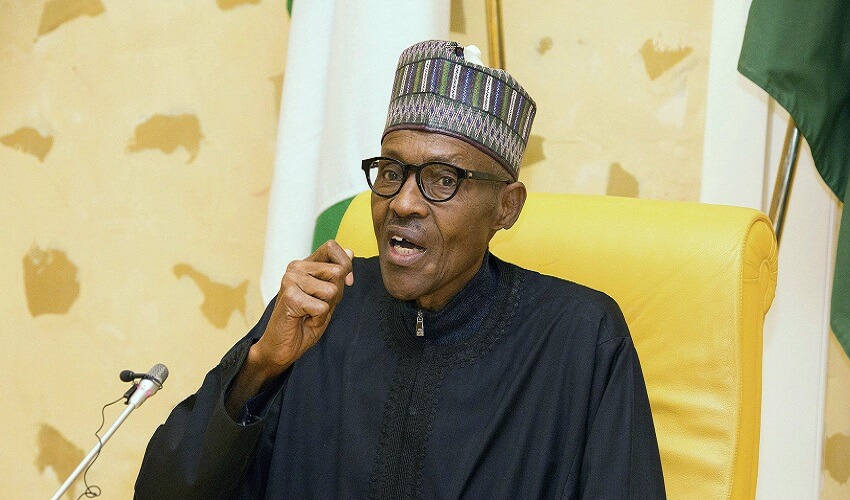Nineteen months after the Federal Government announced the reappointment of Mr. Elias Mbam as Chairman of the Revenue Mobilisation Allocation and Fiscal Commission, the name of the nominee is yet to be sent to the National Assembly by President Muhammadu Buhari, investigation has shown.
Although the Office of the Secretary to the Government of the Federation had in July 2016 issued a statement announcing the reappointment of Mbam to head RMAFC, investigation showed that the nominee was yet to resume office because he had not yet been screened by the Senate.
Advertisement
It was learnt that the Senate had not screened Mbam because his name had not been sent to the President of the Senate, Dr. Bukola Saraki.
There are indications that the ruling All Progressive Congress may have played politics with the announcement of Mbam to head RMAFC. The announcement was made in the heat of accusation of lopsided appointments and marginalisation of the Igbos by President Buhari.
To give credit to this, Minister of Labour and Employment, Dr. Chris Ngige, who was part of Ministerial Town Hall meetings to the South-East had gone to Enugu and boasted that Buhari had such a large that he appointed Mbam even though he was a member of the opposition party, the Peoples’ Democratic Party.
Ngige had said that Mbam had discharged his job creditably in his first tenure at RMAFC and that was why Buhari reappointed him, even though he belonged to PDP. However, 19 months after the announcement was made, the nominee’s name was yet to be sent to the Senate.
Advertisement
Investigation showed that the failure of the Federal Government to send the name of Mbam to the Senate for screening was a deliberate effort to cripple the revenue agency in order to frustrate a new revenue formula that gives the states more resources.
Mbam had during his tenure spearheaded the articulation and draft of a new revenue formula which the 36 states of the federation had clamoured for.
Although the draft document was ready in 2014, President Goodluck Jonathan could not act on it before he was voted out of office. However, it was part of the documents that the leadership of RMAFC handed over to Buhari when they went to brief him upon his assumption of office.
Hopes that the new administration would act on the document were dashed as the Presidency had been rebuffed attempts by the leadership of RMAFC to formally present the draft new revenue formula to the President.
It is the responsibility of the president to present the document to the Federal Executive Council which looks at it before the president sends it the National Assembly.
Advertisement
“With the document not formally presented to the president, it is assumed that he had not received it,” a source at RMAFC who wanted anonymity told our correspondent.
The fact that the tenure of most commissioners of RMAFC had expired and they have not been replaced reinforces the crippling of the organisation.
Each state of the federation is supposed to be represented at the commission by a commissioner. Now, there are less than 10 commissioners and they lack the quorum to take critical decisions at the commission.
The absence of a substantive chairman has been compounded by the spate of retirement of commissioners which have not been replaced, the source added.
The commission requires a quorum of at least one-third of commissioners to be able to take a decision.
Some of the commissioners who retired recently from the commission included Rev. Ajibola Fagboyingbo, who represented Ondo State; Dr. Rafiq Ogunbambi, Lagos State, and Alhaji Bello Maitambari, Kebbi State.
Advertisement
Experts say that the Federal Government had no interest in conceding higher revenue proportions to the subnational government, thus the deliberate strategy to cripple RMAFC with dearth adequate representation and leadership.
After necessary cost of collection and derivation deductions, revenues from both mineral revenue and non-mineral sources are pulled together into the federation account and shared among the nation’s three tiers of government.
The Federal Government gets 52.68 per cent. The state governments get 26.72 per cent while the Local Government Councils get 20.6 per cent.
It is revenues accruing from Value Added Tax that the subnational governments get higher proportions.
From VAT the Federal Government gets 15 per cent; state governments, 50 per cent, and Local Government Councils, 35 per cent.
Before Buhari won the Presidency in 2015, state governments had campaigned vigorously for a new revenue formula.
However, some of the states that campaigned vociferously for the new revenue formula were in the then All Progressive Congress which now controls the government at the centre. Some of the actors at the state level then are now top officials of the Federal Government.



